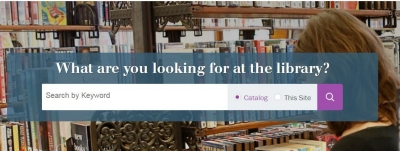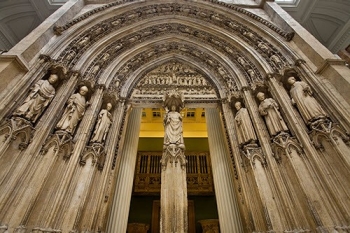Extending the Reach of Public Libraries
In our Librarians Who Wikipedia series we feature public library staff who have organized Wikipedia editing events. Here is a compilation of concrete ways that patrons can engage with public library materials, resources and community spaces at Wikipedia editing events.
Use library databases to access paywalled articles

Wikipedia editing events make use of public library databases to access
paywalled articles.
Many Wikipedia articles are developed by editors gathering sources using search engines, which index free internet webpages and open-access sources. When Wikipedia editors rely on these free sources, they’ve left out of their research process the many high-quality digitized sources that are available in library databases. At Wikipedia events that are co-organized with the help of public libraries, Wikipedia editors learn that libraries—public libraries—make paywalled resources available to their patrons. At the Art+Feminism event in Pittsburgh, a new editor began to develop an article on the photographer Mariana Cook, who became retrospectively famous for the portraits she made of Barack and Michelle Obama in the mid-1990s. This participant was able to access multiple essays available in library databases to start a biographical article, which has since been added to by other Wikipedia contributors.
Bring offline books online
During editing events, public library staff can bring out carts with relevant books for participants to use to contribute to Wikipedia. At the March 2017 event in Pittsburgh, a participant used the book Radical Light: Alternative Film & Video in the San Francisco Bay Area, 1945-2000. This volume helped the participant create the skeleton of an article, also called a “stub,” about Freude (Florence) Bartlett, an experimental film director. The BookSources template on Wikipedia helps to connect Wikipedia readers to cataloging details that list local libraries that may hold the book; a link to WorldCat helps users connect with even more libraries that hold the work. Public libraries extend their reach when cataloging details about offline references are digitally available on commonly accessed websites such as Wikipedia.
Take and share photos of local art and architecture

A photograph of a cast of Renaissance doors on display at the Carnegie
Museum of Art in the Hall of Architecture; the image is featured in the
Wikipedia article about Pittsburgh. Credit: Moira Burke, Creative
Commons Attribution-Share Alike 2.0 Generic license.
Event participants can take, upload and share photos of local art and architecture that is not covered by copyright. The Wikipedia article about Pittsburgh includes a photograph of a cast made in the early 20th century of ornate doors carved by Renaissance sculptor Jean Le Pot. The cast is currently on display in the Hall of Architecture at the Carnegie Museum of Art. Editing events offer participants the opportunity to take and upload photographs of visually significant features of their locales. This photograph of the ornate nine-foot plaster archway was also featured on the Wikivoyage travel guide about the Oakland neighborhood of Pittsburgh. Wikivoyage is one of Wikipedia’s many sister projects. The image, which was taken by Moira Burke and originally uploaded to Flickr, is freely available to view, download and share according to Creative Commons Attribution-Share Alike 2.0 Generic license.
Tips
- To organize an Art+Feminism editing event of your own, download the organizer’s toolkit. This resource provides training materials, a suggested timeline and organizer’s workflow, a day of event plan and more.
- For a toolkit of best practices specific to public libraries, enroll in the Wikipedia + Libraries: Better Together free online training course this fall. Registration begins on July 19, 2017. Watch our project page for more information.
